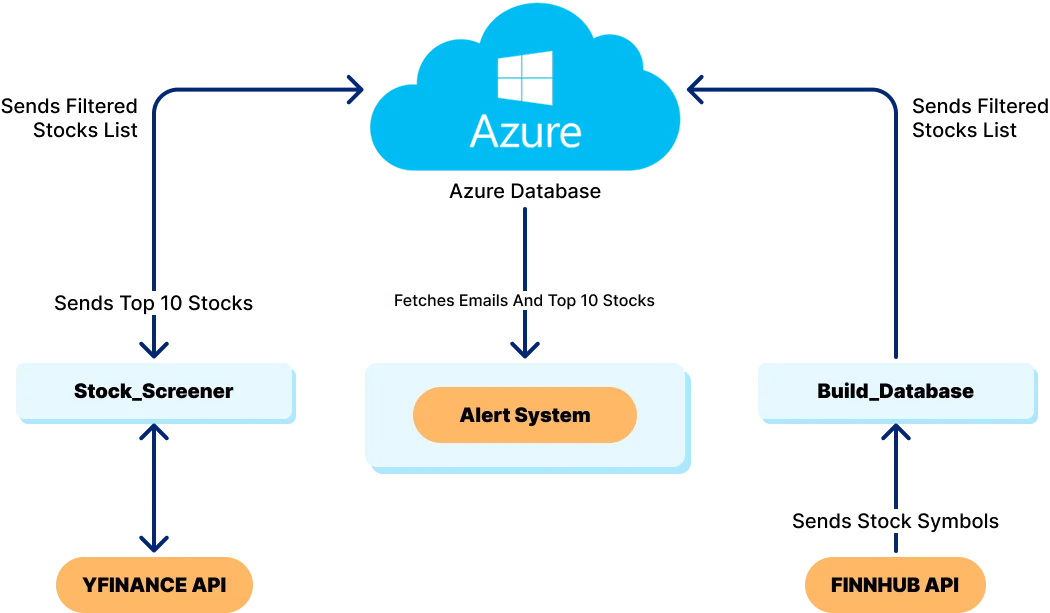Discover how our Python and Azure-based application automates stock filtering, providing real-time, top 10 stock recommendations efficiently and accurately.
Xorbix Technologies Inc. developed an application designed to filter stocks based on specific trading conditions and return the top 10 matches. Built with Python and the yfinance library, the solution retrieves real-time market data and performs precise computations to deliver accurate results. As part of our custom software solution development and digital transformation services, this project streamlines the stock filtering process, enabling users to access timely and reliable stock recommendations.
1. Manual stock filtering was time-consuming and prone to delays.
2. Existing systems lacked automation to handle real-time trading data efficiently.
3. Frequent manual interventions increased operational overhead and reduced productivity.
4. Identifying top-performing stocks under changing market conditions required complex calculations.
5. Delayed updates resulted in missed trading opportunities.
6. The absence of a centralized system caused inconsistencies in filtering and reporting results.
To streamline stock analysis and automate filtering, Xorbix developed a Python-based application that integrates real-time stock data retrieval, computation, and automated reporting. The system efficiently processes large datasets, identifies top-performing stocks, and delivers actionable insights to users through daily updates, all without manual intervention.


A trusted custom software development and cloud solutions company, to enhance your financial decision-making with real-time, data-driven insights.
Discover how our expertise can drive innovation and efficiency in your projects. Whether you’re looking to harness the power of AI, streamline software development, or transform your data into actionable insights, our tailored demos will showcase the potential of our solutions and services to meet your unique needs.
Connect with our team today by filling out your project information.
802 N. Pinyon Ct,
Hartland, WI 53029
(866) 568-8615
info@xorbix.com